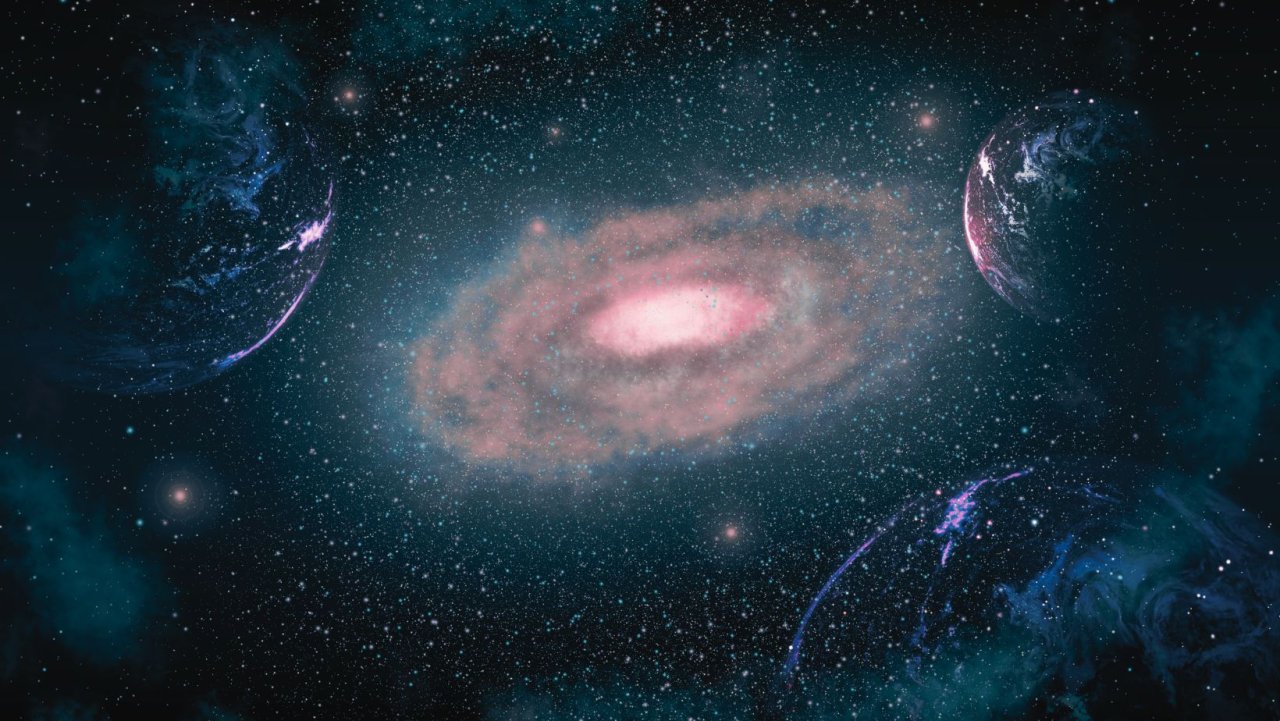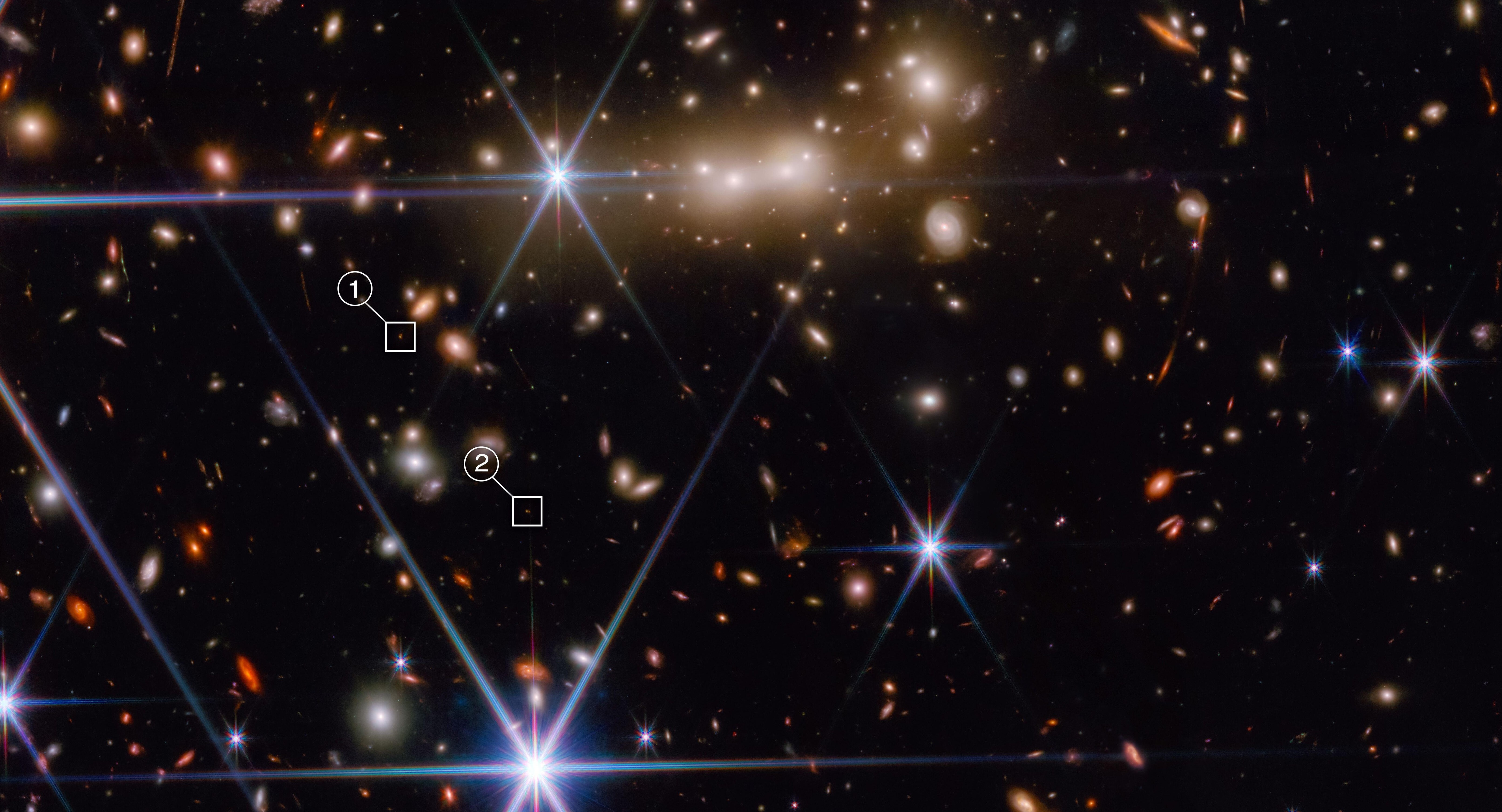NASA’s new space telescope spotted a 13 billion-year-old galaxy that is much too complex to exist that early in the universe.
The galaxy, which is bigger than the Milky Way, could upheave what we know about how dark matter shaped the early universe.
Scientists had been tracking the galaxy, called ZF-UDS-7329, for a while, but they had never been able to get a close enough look, Karl Glazebrook, an astronomer at the Swinburne University of Technology who led the team, said in a statement.

With the James Webb Space Telescope, they were finally able to peer at the galaxy about 11.5 billion years in our past. Light travels at a fixed speed through space, so the image of these early galaxies in the past is only reaching us now.
The team found that ZF-UDS-7329 seemed much more advanced than was previously thought possible.
It looked to contain about four times as many stars by mass as the Milky Way. These stars also looked ancient, about 1.5 billion years old, suggesting the galaxy is about 13 billion years old.

According to current cosmology models, that should not be possible because dark matter is not supposed to have been mature enough at that time.
“The leading theory is that an ocean of dark matter filled the early universe after the Big Bang,” astrophysicist Ivo Labbe of Swinburne University of Technology — an author on the paper — previously told Reuters.
Dark matter is the elusive, invisible stuff that makes up more than 80% of the universe. Scientists still don’t understand what it is and haven’t seen it, but they can pick up its shadow by looking at how it distorts light around the universe.

“This dark matter — we don’t know what it actually is —started out really smooth, with only the tiniest of ripples. These ripples grew over time due to gravity and eventually, the dark matter started to collect in concentrated clumps, dragging hydrogen gas along for the ride,” Labbe said.
The galaxy found by the James Webb telescope shouldn’t be able to exist under this model.
Scientists previously expected these small ripples would only create small, disordered, clumpy galaxies in the universe’s early days. Only after about one billion to two billion years should these early protogalaxies start clumping together, forming more complex, ordered entities, per Space.com.

This isn’t the only galaxy that has been spotted challenging this model. Scientists previously found a 11.7 billion year old barrel galaxy, billions of years before they thought it was possible.
“Having these extremely massive galaxies so early in the universe is posing significant challenges to our standard model of cosmology,” said study coauthor Claudia Lagos, an associate professor of astronomy from the University of Western Australia.
The other puzzling finding is that this galaxy didn’t seem to continue to evolve. Instead, it became quiescent.
“This pushes the boundaries of our current understanding of how galaxies form and evolve,” Themiya Nanayakkara, study author and astronomer at the Swinburne University of Technology, said in the statement.
“The key question now is how they form so fast, very early in the Universe, and what mysterious mechanisms lead to stopping them from forming stars abruptly when the rest of the Universe is doing so,” said Nanayakkara.
Glazebrook, however, cautions that it’s too early to throw out the current model altogether. Although the galaxy is interesting, more evidence is needed to confirm their generalizable observations.
“This result sets a new record for this phenomenon. Although it is very striking, it is only one object. But we hope to find more; and if we do this will really upset our ideas of galaxy formation,” he said in a statement.